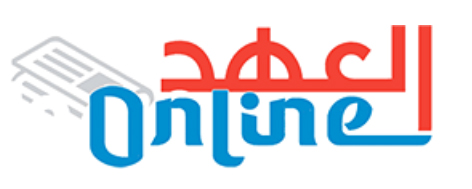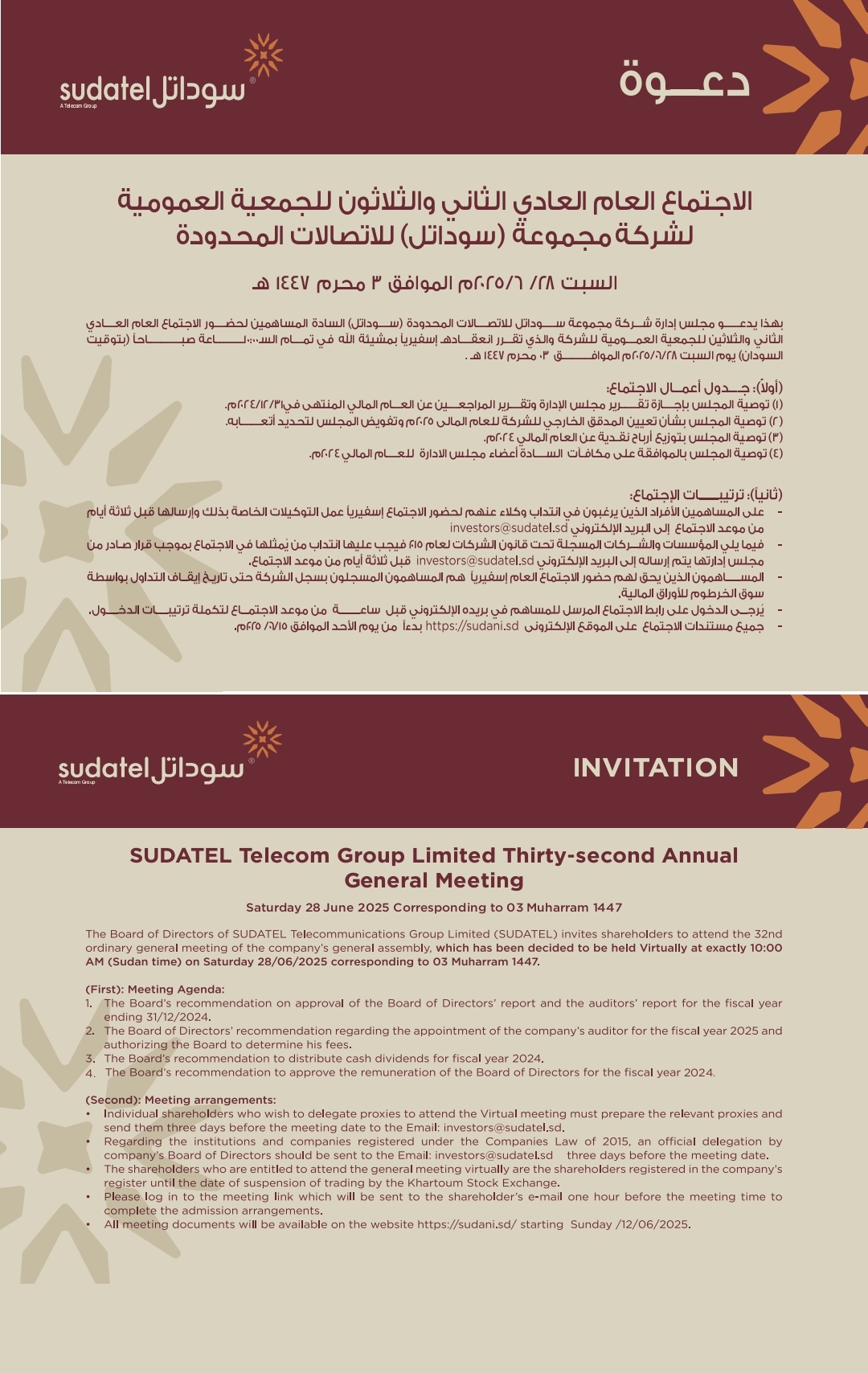د. محمد يوسف قباني يكتب: الحوكمة كنظام ضابط: أسس ومعايير تطبيقية (23) Governance as a Control System: Foundations and Applied Standards (23) Dr. Mohamed Elgabbani..

د. محمد يوسف قباني يكتب: الحوكمة كنظام ضابط: أسس ومعايير تطبيقية (23)
Governance as a Control System: Foundations and Applied Standards (23)
Dr. Mohamed Elgabbani..
يكمن أحد الجوانب الحاسمة لتصميم سياسات الحوكمة القوية في فهم مفاهيم “المجال” و”المجال المضاد”. تساعد هذه المفاهيم في تحديد مجالات النفوذ والسيطرة داخل المنظمة، مما يمكن صناع السياسات من صياغة تدخلات مستهدفة وفعّالة.
إن الحوكمة آلية أساسية لضمان النظام والمساءلة والكفاءة في المنظمات والمؤسسات والدول. وهي تعمل كنظام تحكم ينظم السلوكيات والسياسات وعمليات صنع القرار بما يتماشى مع الأهداف الاستراتيجية والمعايير الأخلاقية. وفي عالم اليوم المترابط والمعقد، تشكل أطر الحوكمة الفعّالة أهمية بالغة لمنع الفساد وتعزيز الاستدامة وتعزيز التنمية الاقتصادية والاجتماعية.
تستكشف هذه المقالة الحوكمة كنظام تحكم من خلال فحص أسسها والمعايير التي توجه تطبيقها وأمثلة واقعية على فعاليتها. من خلال فهم الحوكمة كإطار منظم من الضوابط والتوازنات، يمكننا تقدير دورها في تعزيز الشفافية والكفاءة والمساءلة.
الحوكمة، في جوهرها، هي النظام الذي يتم من خلاله توجيه الكيانات والسيطرة عليها. وهي توفر هيكلًا لاتخاذ القرار وإدارة المخاطر وتقييم الأداء عبر مختلف القطاعات، بما في ذلك الشركات والمنظمات العامة وغير الربحية. تعمل الحوكمة كنظام تحكم على وضع القواعد والآليات والإجراءات لضمان أن الإجراءات المتخذة داخل المؤسسة تتوافق مع الأهداف الأوسع والاعتبارات الأخلاقية والمتطلبات التنظيمية.
تاريخيًا، تطورت الحوكمة من الاتفاقيات والعادات غير الرسمية إلى الأطر القانونية والتنظيمية المنظمة. ومع ظهور العولمة والتكنولوجيا ونفوذ الشركات المتزايد، أصبحت معايير الحوكمة أكثر رسمية، مما استلزم الامتثال لأفضل الممارسات الدولية مثل مبادئ منظمة التعاون الاقتصادي والتنمية للحوكمة الشركاتية، وقانون
ساربينز أوكسلي، ومعيار ISO 37000 للحوكمة الرشيدة.
يتناول هذا المقال الجوانب الأساسية للحوكمة، ووظيفتها كنظام تحكم، والمعايير المطبقة التي تحكم المنظمات الحديثة. كما يسلط الضوء على دراسات الحالة وأمثلة الحوكمة في العمل، موضحًا تأثيرها على المساءلة وإدارة المخاطر ونجاح المنظمة.
أسس الحوكمة كنظام تحكم
تعمل الحوكمة كنظام تحكم من خلال وضع القواعد ومراقبة الامتثال وفرض المساءلة. تشمل العناصر الأساسية للحوكمة ما يلي:
الهيكل والسلطة – تنشئ أطر الحوكمة تسلسلات هرمية واضحة وتفويض السلطة، مما يضمن توزيع مسؤوليات اتخاذ القرار بكفاءة.
السياسات والإجراءات – توفر القواعد والسياسات الرسمية إرشادات حول السلوك الأخلاقي والإدارة المالية والكفاءة التشغيلية.
آليات المساءلة – تشمل هذه عمليات التدقيق وتقييم الأداء والإشراف القانوني لضمان الشفافية والامتثال.
إدارة المخاطر – تحدد أطر الحوكمة المخاطر وتخففها من خلال الاستراتيجيات الاستباقية والضوابط الداخلية.
إشراك أصحاب المصلحة – تتضمن الحوكمة التفاعلات مع المساهمين والموظفين والعملاء والجهات التنظيمية
والمجتمعات لتحقيق التوازن بين المصالح المتنوعة.
تشكل هذه العناصر العمود الفقري لأنظمة الحوكمة، سواء في البيئات المؤسسية أو المؤسسات الحكومية أو المنظمات غير الربحية.
نماذج الحوكمة
تحدد نماذج الحوكمة المختلفة كيفية ممارسة المنظمات للرقابة:
الحوكمة المؤسسية – تركز على حقوق المساهمين ومسؤوليات مجلس الإدارة والإفصاحات المالية لضمان نزاهة الشركة وربحيتها.
الحوكمة العامة – تشمل السياسات الحكومية وإنفاذ القانون والإشراف التنظيمي لدعم الثقة العامة والمبادئ الديمقراطية.
الحوكمة غير الربحية – تضمن أن تلتزم المنظمات التي تحركها المهمة بالمعايير الأخلاقية والشفافية والمساءلة في استخدام الموارد.
يطبق كل نموذج مبادئ الحوكمة بشكل فريد، لكنها جميعًا تشترك في الهدف الأساسي المتمثل في الحفاظ على السيطرة والمساءلة.
معايير الحوكمة التطبيقية وتنفيذها
لضمان فعالية الحوكمة، تم تطوير معايير وأطر عالمية مختلفة. وتشمل بعض أكثرها تأثيرًا:
مبادئ منظمة التعاون الاقتصادي والتنمية لحوكمة الشركات
توفر منظمة التعاون الاقتصادي والتنمية (OECD) إطارًا للحوكمة يؤكد على:
حقوق المساهمين والمعاملة العادلة
الشفافية والإفصاح
مسؤوليات مجلس الإدارة والرقابة
تتبنى الشركات والهيئات التنظيمية في جميع أنحاء العالم هذه المبادئ على نطاق واسع.
قانون ساربانس أوكسلي (SOX، 2002)
تم سنه استجابة لفضائح الشركات (على سبيل المثال، إنرون وورلدكوم)، ويفرض قانون ساربانس أوكسلي إعداد تقارير مالية أكثر صرامة، وضوابط داخلية، ومساءلة تنفيذية لمنع الاحتيال في الشركات.
3. ISO 37000:2021 حوكمة المنظمات
قدمت المنظمة الدولية للمعايير (ISO) ISO 37000 لتوفير إرشادات حوكمة شاملة للمنظمات عبر الصناعات. وتؤكد على:
القيادة الأخلاقية
إشراك أصحاب المصلحة
إدارة المخاطر الفعالة
يدعم هذا المعيار الشركات والمؤسسات في إنشاء هياكل حوكمة قوية.
تقرير الملك الرابع حول حوكمة الشركات (جنوب أفريقيا)
إطار حوكمة قائم على المبادئ يشجع القيادة الأخلاقية والمسؤولية الاجتماعية والاستدامة في عمليات الشركات. ويدعو إلى الشفافية والتقارير المتكاملة.
بازل 3 (معايير حوكمة البنوك)
يتم تعزيز الحوكمة في القطاع المالي من خلال بازل 3، الذي يعزز اللوائح المصرفية ومتطلبات رأس المال وإدارة المخاطر. ويضمن الاستقرار المالي من خلال تعزيز الرقابة الصارمة على المؤسسات المالية.
توضيحات وأمثلة على الحوكمة في الممارسة العملية
دراسة الحالة الأولى: فشل حوكمة الشركات – فضيحة إنرون
تعد فضيحة إنرون في عام 2001 مثالاً واضحاً على فشل الحوكمة. فقد انخرط المسؤولون التنفيذيون في إنرون في ممارسات محاسبية احتيالية لتضخيم الأرباح وتضليل المستثمرين والجهات التنظيمية. وقد أدى الافتقار إلى ضوابط الحوكمة إلى انهيار الشركة ودفع إلى إدخال قانون ساربانس أوكسلي، الذي عزز المساءلة عن الحوكمة في البيئات المؤسسية.
دراسة الحالة الثانية: الحوكمة العامة الفعّالة – سنغافورة
غالبًا ما يُستشهد بسنغافورة كمثال على الحوكمة العامة القوية. تفرض حكومتها تدابير صارمة لمكافحة الفساد، وصنع السياسات بشفافية، وأطر تنظيمية فعّالة. وقد ساهم هذا في نجاحها الاقتصادي وثقتها العالية في المؤسسات العامة.
دراسة الحالة الثاثلة: الحوكمة في القطاع غير الربحي – مؤسسة بيل وميليندا جيتس
تعمل مؤسسة جيتس في إطار حوكمة يؤكد على الشفافية وقياس الأثر وإشراك أصحاب المصلحة. ويضمن نهجها المنظم في التمويل وتنفيذ البرامج الاستخدام الفعال للموارد والمساءلة في تحقيق أهدافها الصحية والتعليمية العالمية.
دراسة الحالة الرابعة: حوكمة البنوك – الأزمة المالية لعام 2008
أبرزت الأزمة المالية لعام 2008 نقاط ضعف الحوكمة في المؤسسات المالية. فقد أدى ضعف إدارة المخاطر، والافتقار إلى الرقابة التنظيمية، والممارسات غير الأخلاقية إلى انهيار اقتصادي واسع النطاق. وردًا على ذلك، قدمت اتفاقية بازل الثالثة لوائح حوكمة أكثر صرامة للبنوك، مع التركيز على الاستقرار المالي والسيطرة على المخاطر.
إن الحوكمة كنظام تحكم تلعب دوراً حاسماً في ضمان المساءلة والكفاءة واتخاذ القرارات الأخلاقية في المنظمات والمؤسسات. فهي تنشئ أطراً منظمة توجه السلوك وتخفف المخاطر وتنسق الإجراءات مع الأهداف الاستراتيجية. والحوكمة ليست نظاماً واحداً يناسب الجميع؛ بل لابد من تكييفها مع الصناعات المختلفة والسياقات المجتمعية مع الالتزام بأفضل الممارسات العالمية.
إن تطبيق معايير الحوكمة مثل مبادئ منظمة التعاون الاقتصادي والتنمية وقانون ساربينز أوكسلي والمعيار الدولي 37000 يعزز الشفافية والامتثال، ويقلل من خطر سوء الإدارة والفساد. ومن خلال الأمثلة الواقعية، نرى عواقب فشل الحوكمة وفوائد هياكل الحوكمة القوية في دفع النجاح المستدام.
مع استمرار تطور الحوكمة، يجب على المنظمات أن تظل ملتزمة بتعزيز آليات التحكم لديها لتعزيز الثقة والابتكار والنمو الطويل الأجل. وسواء في الشركات أو الحكومات أو المنظمات غير الربحية، تظل الحوكمة ركيزة أساسية للاستقرار والتقدم في عالم متزايد التعقيد.
A crucial aspect of designing robust governance policies lies in understanding the concepts of “domain” and “counter-domain.” These concepts help delineate the areas of influence and control within an organization, enabling policymakers to craft targeted and effective interventions.
Governance is an essential mechanism for ensuring order, accountability, and efficiency in organizations, institutions, and states. It serves as a control system that regulates behaviors, policies, and decision-making processes to align with strategic objectives and ethical standards. In today’s
interconnected and complex world, effective governance frameworks are crucial for preventing corruption, promoting sustainability, and fostering economic and social development.
This essay explores governance as a control system by examining its foundations, the standards that guide its application, and real-world examples of its effectiveness. By understanding governance as a structured framework of checks and balances, we can appreciate its role in promoting
transparency, efficiency, and accountability.
Governance, at its core, is the system by which entities are directed and controlled. It provides a structure for decision-making, risk management, and performance evaluation across various sectors, including corporate, public, and nonprofit
organizations. Governance as a control system establishes rules, mechanisms, and procedures to ensure that actions taken within an institution align with broader objectives, ethical considerations, and regulatory requirements.
Historically, governance has evolved from informal agreements and customs to structured legal and regulatory frameworks. With the advent of globalization, technology, and increasing corporate influence, governance standards have become more formalized, necessitating compliance with international best practices such as the
OECD Principles of Corporate Governance, the Sarbanes-Oxley Act, and the ISO 37000 standard for good governance.
This essay delves into the foundational aspects of governance, its function as a control system, and the applied standards that govern modern organizations. It also highlights case studies and examples of
governance in action, demonstrating its impact on accountability, risk management, and organizational success.
Foundations of Governance as a Control System
Governance operates as a control system by setting rules, monitoring compliance, and enforcing accountability. The fundamental elements of governance include:
Structure and Authority – Governance frameworks establish clear hierarchies and delegation of authority, ensuring that decision-making responsibilities are distributed efficiently.
Policies and Procedures – Formal rules and policies provide guidelines on ethical conduct, financial management, and operational efficiency.
Accountability Mechanisms – These include audits, performance evaluations, and legal oversight to ensure transparency and compliance.
Risk Management – Governance frameworks identify and mitigate risks through proactive strategies and internal controls.
Stakeholder Engagement – Governance involves interactions with shareholders, employees, customers, regulators, and communities to balance diverse interests.
These elements form the backbone of
governance systems, whether in corporate settings, governmental institutions, or non-profit organizations.
Governance Models
Different governance models dictate how organizations exercise control:
Corporate Governance – Focuses on shareholder rights, board responsibilities, and financial disclosures to ensure
company integrity and profitability.
Public Governance – Encompasses government policies, law enforcement, and regulatory oversight to uphold public trust and democratic principles.
Nonprofit Governance – Ensures that mission-driven organizations adhere to ethical standards, transparency, and accountability in resource utilization.
Each model applies governance principles uniquely, but they all share the core objective of maintaining control and accountability.
Applied Governance Standards and Their Implementation
To ensure governance effectiveness, various global standards and frameworks have been developed. Some of the most influential include:
The OECD Principles of Corporate Governance
The Organization for Economic Co-operation and Development (OECD) provides a governance framework emphasizing:
Shareholder rights and equitable treatment
Transparency and disclosure
Board responsibilities and oversight
These principles are widely adopted by corporations and regulatory bodies worldwide.
The Sarbanes-Oxley Act (SOX, 2002)
Enacted in response to corporate scandals (e.g., Enron and WorldCom), SOX mandates stricter financial reporting, internal controls, and executive accountability to prevent corporate fraud.
ISO 37000:2021 – Governance of Organizations
The International Organization for Standardization (ISO) introduced ISO 37000 to provide comprehensive governance guidance for organizations across industries. It emphasizes:
Ethical leadership
Stakeholder engagement
Effective risk management
This standard supports businesses and institutions in establishing strong governance structures.
King IV Report on Corporate Governance (South Africa)
A principle-based governance framework that encourages ethical leadership, social responsibility, and sustainability in corporate operations. It advocates for transparency and integrated reporting.
Basel III (Banking Governance Standards)
Governance in the financial sector is
reinforced through Basel III, which strengthens banking regulations, capital requirements, and risk management. It ensures financial stability by promoting stringent oversight of financial institutions.
Clarifications and Examples of Governance in Practice
Case Study 1: Corporate Governance Failure – Enron Scandal
The Enron scandal of 2001 is a textbook example of governance failure. Enron executives engaged in fraudulent accounting practices to inflate profits, misleading investors and regulators. The lack of governance controls led to the
company’s collapse and prompted the introduction of the Sarbanes-Oxley Act, reinforcing governance accountability in corporate settings.
Case Study 2: Effective Public Governance – Singapore
Singapore is often cited as an example of strong public governance. Its government enforces strict anti-corruption measures, transparent policymaking, and efficient regulatory frameworks. This has contributed to its economic success and high trust in public institutions.
Case Study 3: Governance in the Nonprofit Sector – The Bill & Melinda Gates Foundation
The Gates Foundation operates under a governance framework emphasizing transparency, impact measurement, and stakeholder engagement. Its structured approach to funding and program implementation ensures effective use of resources and accountability in achieving its global health and education goals.
Case Study 4: Banking Governance – The 2008 Financial Crisis
The 2008 financial crisis highlighted governance weaknesses in financial institutions. Poor risk management, lack of regulatory oversight, and unethical practices led to widespread economic collapse. In response, Basel III introduced stricter
governance regulations for banks, focusing on financial stability and risk control.
Governance as a control system plays a crucial role in ensuring accountability, efficiency, and ethical decision-making in organizations and institutions. It establishes structured frameworks that guide behavior, mitigate risks, and align actions with
strategic objectives. Governance is not a one-size-fits-all system; it must be adapted to different industries and societal contexts while adhering to global best practices.
The application of governance standards such as the OECD Principles, Sarbanes-Oxley Act, and ISO 37000 enhances
transparency and compliance, reducing the risk of mismanagement and corruption. Through real-world examples, we see both the consequences of governance failures and the benefits of strong governance structures in driving sustainable success.
As governance continues to evolve,
organizations must remain committed to strengthening their control mechanisms to foster trust, innovation, and long-term growth. Whether in corporations, governments, or non-profits, governance remains a fundamental pillar for stability and progress in an increasingly complex world.









